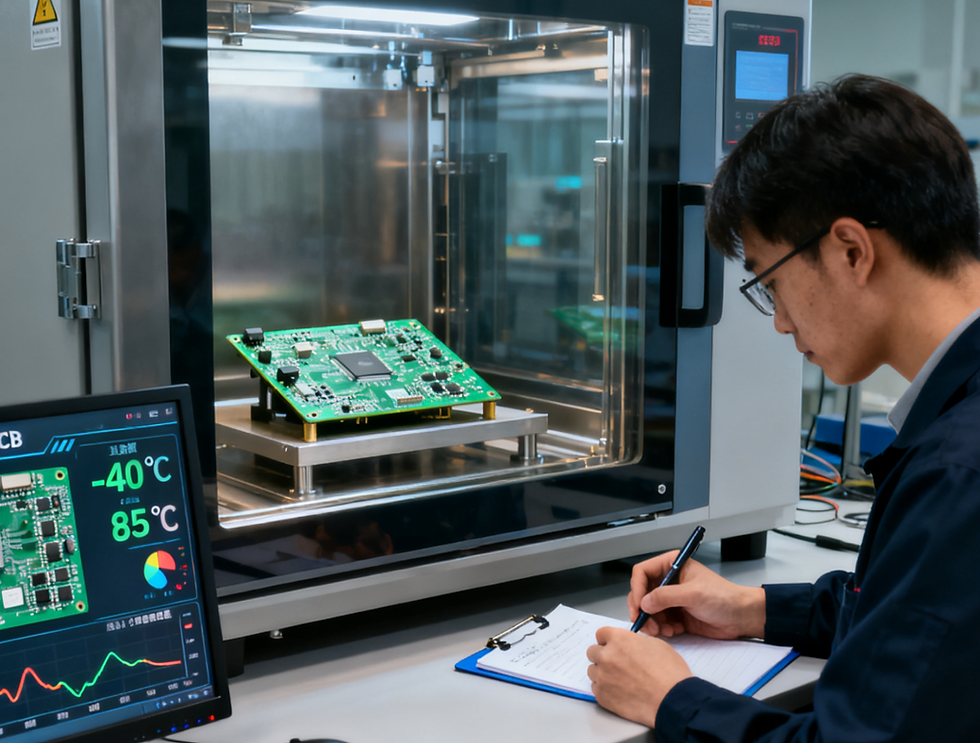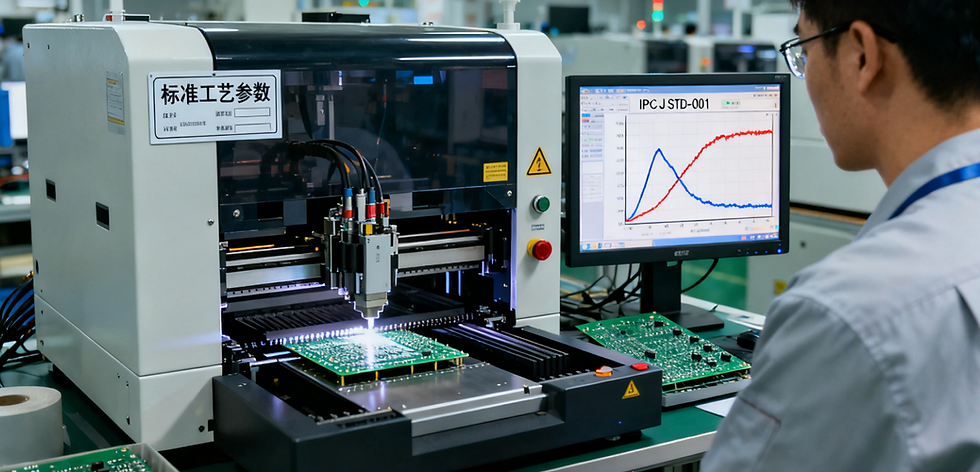PCB Size Optimization: How to Maximize Circuit Layout in Limited Space?
- Sunsoar engineer Mia
- May 11
- 3 min read
PCB Size Optimization: How to Maximize Circuit Layout in Limited Space?
As electronic devices become increasingly compact, engineers are constantly challenged to fit more functionality into smaller spaces. PCB size optimization isn’t just a design preference anymore—it’s a critical necessity for performance, cost-efficiency, and product feasibility. But how exactly do designers maximize circuit layout within a constrained board area? Let’s explore the practical engineering strategies and industry trends driving PCB miniaturization forward.
Why PCB Size Matters More Than Ever
From wearable tech to IoT modules and automotive sensors, shrinking PCB footprints mean more than just saving space. A smaller board can reduce material costs, improve electrical performance through shorter signal paths, and make thermal management more efficient. However, smaller doesn’t always mean better—there must be a balance between size, functionality, and manufacturability.
At Sunsoar, we regularly help clients achieve this delicate balance by applying advanced DFM (Design for Manufacturing) principles, layered stack-ups, and customized layout optimizations that are often missed by automated EDA tools.
Intelligent Component Placement
The foundation of a compact and reliable PCB starts with smart component placement. Prioritizing high-speed and heat-sensitive components near power sources and connectors can significantly reduce trace lengths, enhancing signal integrity. Grouping related components into logical blocks—while adhering to spacing guidelines—further streamlines routing and helps in future revisions.
We often find that novice layouts waste space due to inefficient positioning. Our engineering team uses real-world experience and simulation to avoid such pitfalls and ensure optimal component alignment without compromising accessibility for testing or repair.
Layer Stack-Up Optimization
One of the most underutilized methods of size reduction is expanding vertically instead of horizontally. By increasing the number of layers in your PCB, you can separate signal routing, ground, and power planes efficiently. For example, a 6-layer board might allow for a 30–40% reduction in board area compared to a 2-layer layout.
Sunsoar specializes in HDI (High-Density Interconnect) technologies—such as blind and buried vias—which allow us to create complex interconnections in multi-layer PCBs without consuming valuable surface area. This technology is a favorite among our clients in the aerospace, medical, and consumer electronics sectors.
Design Rule Customization
Strict adherence to IPC standards is essential, but sometimes, manufacturers apply conservative spacing and trace width rules that limit your layout’s potential. At Sunsoar, we offer customized design rule consultations to ensure you're taking full advantage of your board’s fabrication tolerances.
For example, reducing trace width from 6 mils to 4 mils or minimizing via pad diameters—without violating reliability thresholds—can open up more space for routing in tight areas. We test these strategies in close cooperation with our production lines, ensuring manufacturability isn’t compromised.
Embedded Components and Passive Integration
If you're developing high-frequency or ultra-compact modules, embedded components are a powerful alternative to traditional surface-mount techniques. Passive components like resistors and capacitors can be integrated within the PCB substrate itself, freeing up top and bottom layers for active circuitry.
Although embedded components raise the bar for design and require closer collaboration with fabricators, Sunsoar's in-house R&D and manufacturing capabilities make this advanced technique accessible even to startups and small-scale innovators.
Panelization Strategy and Cost Efficiency
Optimizing your layout also includes understanding how the PCB fits into a manufacturing panel. A cleverly designed board shape—such as using rounded edges or V-grooves—can maximize panel yield and reduce per-board costs.
Our engineers evaluate panelization options during the layout phase, not just during production, giving you better long-term cost control. In comparison to mass-production factories like JLCPCB or PCBWay, we offer more personalized design-to-production consultation to help optimize both board size and volume pricing.
Final Thoughts: Optimization is a Process, Not a Shortcut
PCB size optimization is rarely about cramming components together—it’s about intelligent trade-offs, deep fabrication knowledge, and strategic planning. While many online tools and auto-routers promise quick fixes, the most space-efficient PCBs are born from collaboration between designers and manufacturers.
At Sunsoar, we don't just fabricate your boards—we guide you through every step to ensure your circuit fits perfectly, performs reliably, and supports your long-term business goals.
📩 Need help optimizing your PCB layout? Contact our engineering experts at sales03@sunsoartech.com or call us at +86 13632793113. Let's make your ideas smaller, smarter, and stronger.
📺 Follow us on YouTube for design tutorials and real production case studies: youtube.com/@sunsoar-pcb
Tags:PCB Layout Optimization, Compact PCB Design, High-Density Interconnect, Embedded Components, Circuit Miniaturization, Multilayer PCB, Sunsoar PCB



Comments